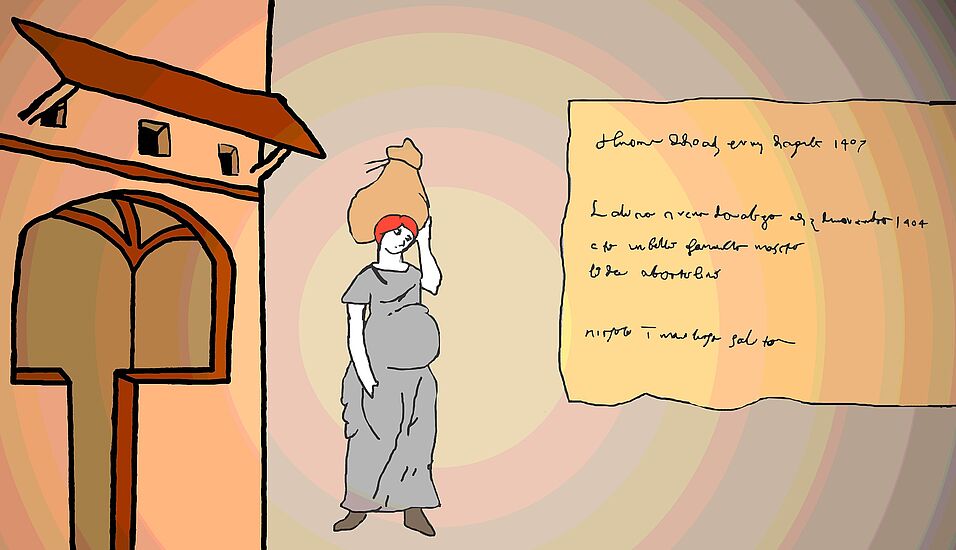The late medieval western Mediterranean consisted of societies with slaves. Most of them were young women from the eastern Mediterranean for whom sexual exploitation was part of the daily experiences of slavery. Some male Italian slave owners tried to cover this up with a cloak of silence. Rare sources, such as an exchange of letters between slave owners, allow a limited view of sexual violence and the ensuing legal consequences.
The merchant Francesco di Marco Datini (1335–1410), founder of a complex “system of companies” in the late Middle Ages, had one or two enslaved women in his household in Tuscany – as did many rich merchants of his time. Slaves were owned by persons, groups, and/or institutions. Datini’s companies on the shores of the western Mediterranean – namely in Pisa, Avignon, Barcelona, Valencia, and Palma de Mallorca – also owned and/or hired enslaved women on a temporary basis. Datini, his male employees, and other travelling merchants had sex with enslaved women, regardless of their marital status and whether the slave was their property or not.
A Taboo Topic
In Catholic Christian societies of the 1400s, sex was supposed to serve a single purpose: procreation. Ideally, the next generation would be produced exclusively within the monogamous bonds of marriage. According to the authors of Christian moral literature (such as the penitentials), sex was a matter of timing. Husbands were advised to abstain from sexual relations with their wives on religious feasts, on weekdays reserved for penance and communal prayer, and when their wives were breastfeeding, menstruating or pregnant. Historian James A. Brundages’s “feeling randy?”-flowchart brilliantly visualises the regulation of sex in the Middle Ages. In fact, married couples who consciously observed the penitential rules “would rarely have been able to make love more than five times per month during their years of maximum sexual activity.”
Der ganze Beitrag von Corinna Peres ist auf dem Blog von "fernetzt - Junges Forschungsnetzwerk Frauen- und Geschlechtergeschichte" zu lesen: https://fernetzt.univie.ac.at/20240515-2/
Corinna Peres hat ihre Dissertation "'She wants to do it her own way.' Enslaved Women, Their Work, and Their Children in the Datini Merchant Community, 1380s-1410s" kürzlich an der Universität Wien eingereicht, eine Buchpublikation ist in Arbeit.

